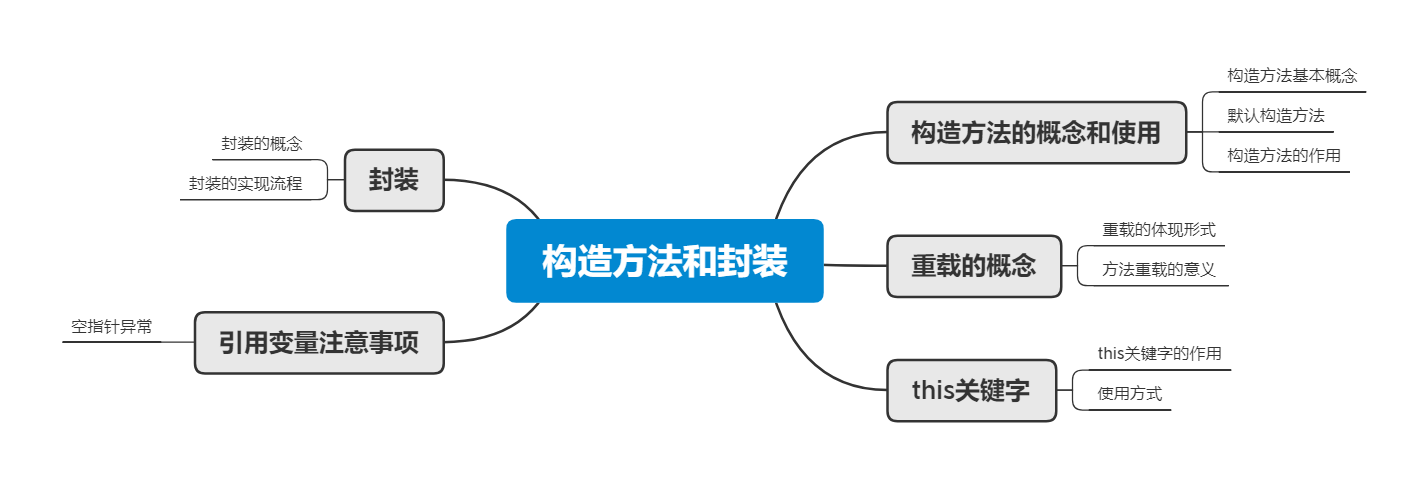2022-07-19 第二小组 张鑫 学习笔记
实训十一天 面向对象2
1.学习重点
1.构造器赋值
2.this关键字
3.存款系统实例
4.封装
5.登录注册实例
2.导图

3.学习心得
今天一天再次加强了面向对象的学习,主要的学习内容就是this关键字以及封装,做了两个案例,我还是感觉逻辑差一些意思,总是不知道怎么合理的将类和方法练习套用到主方法中,还是需要多加练习!
4.学习内容
构造器赋值
什么时候用构造器赋值:
看创建对象是为了干什么,
如果创建对象只是为了调用类的方法,建议使用无参构造器
如果创建对象时需要用到对象的某个属性,可以使用构造器
this关键字
this代表的是当前类的对象,this代表当前方法的调用者
this既然是代表方法的调用者,它实际上和对象的作用是一样的
既可以调属性,也可以调方法
一个类中可以有什么?
属性,方法,构造器
this不能用在static 方法中
开发中,this通常用在什么位置?
通常用来赋值,尤其是构造器赋值
使用this调用构造器的要求
1.必须在构造器中使用this调用构造器
2.必须是第一句话(第一行代码)
代码
public class Ch02 {
String str;
int i;
public Ch02(){
}
public Ch02(String str){
this.str =str;
}
public Ch02(String str,int i){
// this.str =str;
//调用构造器
//不需要写任何名字
this(str);
this.i = i;
}
public void show(String str){
/*
使用对象调用属性时,调用的是成员变量
*/
// Ch02 c=new Ch02();
this.str =str;
this.info();
}
public void info(){
System.out.println(str);
}
存款系统实例
案例要求
有一个Person类,有name,age属性
有一个Debit类,有cardId,password,balance属性
Person类有一个开户的方法,openAccount,in(余额增加),out(余额减少,取款时要判断余额)
Debit类中有一个显示银行卡信息的方法
赋值的方式:
1.构造器
2.直接通过属性的方式赋值
分析:
开户时:给Person类的Debit属性赋值,Debit初始化时需要给cardId,password,balance赋值
最终在Demo类中测试相关功能
加功能
键盘输入:存款和取款需要比对密码
加键盘输入:
1.开户时:密码,姓名,年龄,余额
2.存取钱:存取多少钱
demo类
public class Demo {
public static void main(String[] args) {
Scanner sc=new Scanner(System.in);
System.out.println("请输入您的姓名:");
String name =sc.next();
System.out.println("请输入您的年龄:");
int age=sc.nextInt();
System.out.println("请输入您的密码:");
int password=sc.nextInt();
System.out.println("请存入您的初始余额");
double balance =sc.nextDouble();
System.out.println("开卡成功!");
Person person = new Person(name,age);
Debit debit =new Debit("1001",password,balance);
person.openAccount(debit);
System.out.println("请选择业务:1.存款 2.取款");
String choose =sc.next();
switch (choose){
}
person.in(120);
person.out(230);
}
person类
public class Person {
String name;
int age;
Debit debit;
public Person() {
}
public Person(String name, int age){
this.name=name;
this.age=age;
}
public void openAccount(Debit debit){
this.debit=debit;
//开户成功,显示一下开户信息
debit.show();
show();
}
public void show(){
System.out.println("姓名:"+name+" 年龄"+age);
}
public boolean valid(int pass){
if(pass == debit.password){
return true;
}
return false;
}
public void in(double money){
//存款:修改余额并重新赋值
debit.balance +=money;
System.out.println("存款成功,余额为:"+debit.balance);
}
public void out(double money){
//取款:修改余额并重新赋值
if(money<= debit.balance){
debit.balance -=money;
System.out.println("取款成功,余额为:"+debit.balance);
}else {
System.out.println("余额不足!余额为:"+debit.balance);
}
}
}
debit类
public class Debit {
String cardId;
int password;
double balance;
public Debit() {
}
public Debit(String cardId, int password, double balance) {
this.cardId = cardId;
this.password = password;
this.balance = balance;
}
public void show(){
System.out.println("卡号:"+cardId+" 余额:"+balance);
}
}
封装
1.代码层面
(1)属性私有化,所有的属性都要使用private封装 (2)提供一个公有的set,get方法
getter方法能够按照客户的期望返回格式化的数据
setter方法可以限制和检验setter方法传入的参数是否合法
隐藏对象的内部结构
正确定义一个类:
(1)所有的属性私有化
(2)每个属性都有对应的get,set方法
2.思想层面
空指针异常
什么情况下会出现空指针异常
引用数据类型的默认值(初始值是null,空引用)
3个异常
1.数组下标越界
2.内存溢出(错误)
3.空指针



 浙公网安备 33010602011771号
浙公网安备 33010602011771号